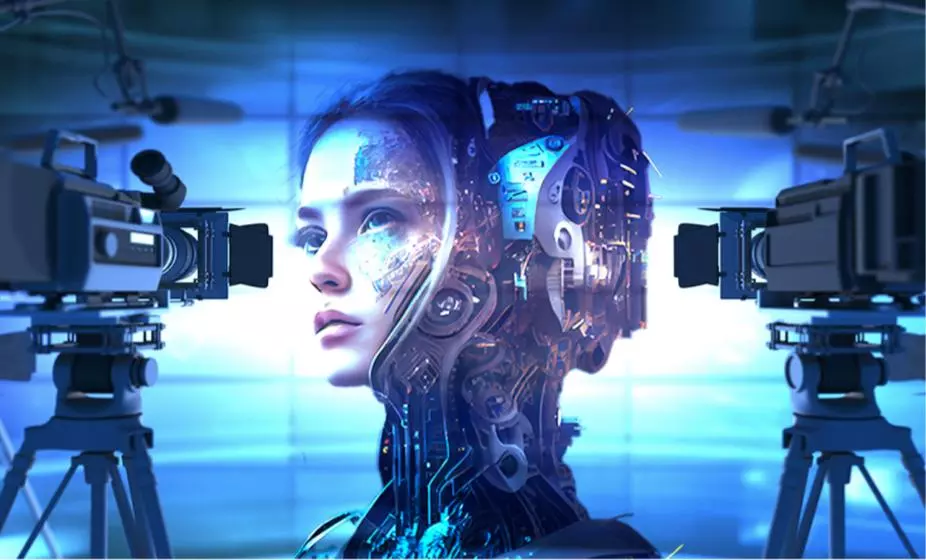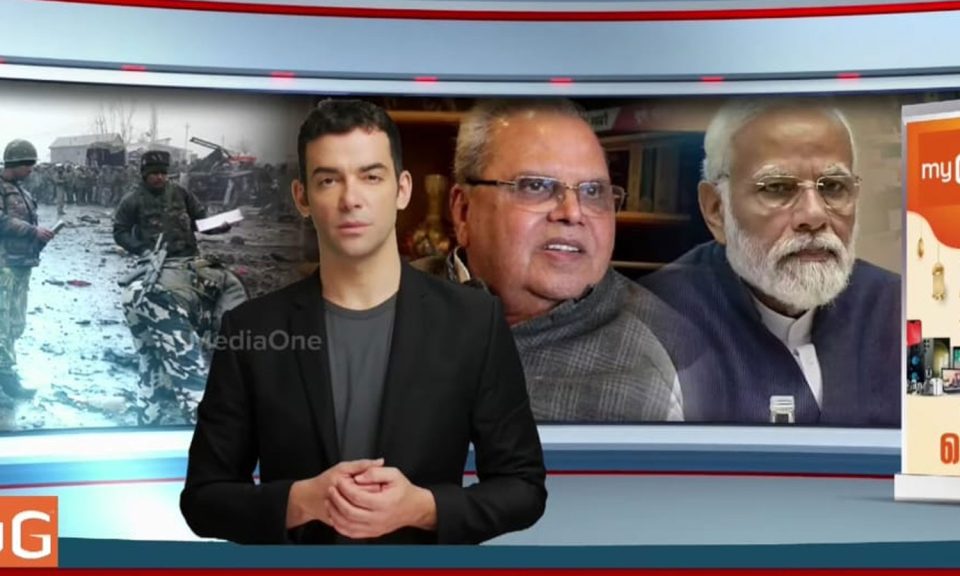
- Home
- India
- World
- Premium
- THE FEDERAL SPECIAL
- Analysis
- States
- Perspective
- Videos
- Sports
- Education
- Entertainment
- Elections
- Features
- Health
- Business
- Series
- In memoriam: Sheikh Mujibur Rahman
- Bishnoi's Men
- NEET TANGLE
- Economy Series
- Earth Day
- Kashmir’s Frozen Turbulence
- India@75
- The legend of Ramjanmabhoomi
- Liberalisation@30
- How to tame a dragon
- Celebrating biodiversity
- Farm Matters
- 50 days of solitude
- Bringing Migrants Home
- Budget 2020
- Jharkhand Votes
- The Federal Investigates
- The Federal Impact
- Vanishing Sand
- Gandhi @ 150
- Andhra Today
- Field report
- Operation Gulmarg
- Pandemic @1 Mn in India
- The Federal Year-End
- The Zero Year
- Science
- Brand studio
- Newsletter
- Elections 2024
- Events
- Home
- IndiaIndia
- World
- Analysis
- StatesStates
- PerspectivePerspective
- VideosVideos
- Sports
- Education
- Entertainment
- ElectionsElections
- Features
- Health
- BusinessBusiness
- Premium
- Loading...
Premium - Events

Bot anchors come to life! Will they turn up the decibels on fake news and agenda?

The Capture, British conspiracy thriller series that debuted in 2019 and continued through 2022, narrates an evocative story involving deepfake technology, used to falsely mimic human features or voices in audio visual media. The Holliday Grainger and Paapa Essiedu-starrer portrays the dangers of a powerful deepfake technology in the hands of the state. The idea that any nation-state could...
The Capture, British conspiracy thriller series that debuted in 2019 and continued through 2022, narrates an evocative story involving deepfake technology, used to falsely mimic human features or voices in audio visual media. The Holliday Grainger and Paapa Essiedu-starrer portrays the dangers of a powerful deepfake technology in the hands of the state. The idea that any nation-state could be subverted by someone who could deeply fake real-world footage to further their crazy agenda made for a terrifying TV drama last year, but six months further up, it has become an unbelievable reality, especially in the media world.
Many television news channels across the world have already introduced robotic news anchors powered by Artificial Intelligence. India Today’s group’s Hindi news channel Aaj Tak was the first to go on air with a regular news show anchored by a ‘female’ bot named Sana. The experiment comes close on heels of the entry of the AI aided chatbot, ChatGPT, into the newsroom, with several news magazines and portals putting out special issues using the new technology. Malayalam webzine, True Copy, put out an entire issue, with both fiction and non-fiction as content using ChatGPT.
“There were only two articles by human authors in that edition of our webzine, which we published in its entirety using ChatGPT. As editors, we have the responsibility of being sensitive to the time we live in. That is why we made the decision to make use of AI in the newsroom. How the idea of AI will affect human life was something we wanted to examine and politically assess,” TM Harshan, chief operating officer and associate editor of True Copy told The Federal.

Sana, the female AI news anchor, was launched in a conclave organised by the media group attended by Prime Minister Narendra Modi, in March 2023. According to India Today group’s vice chairperson, Kallie Purie, “Sana is bright, gorgeous, ageless, and tireless. She does not take away from the brilliance of real-life anchors, who will be mentoring her.”
In the launching ceremony, Purie also affirmed that Sana will have a human surrogate editor and hopefully company soon.
In Malayalam, Media One Television came up with a male news anchor, Ivan, who presented one of their late-night bulletins on April 15.
“Our team was very keen on experimenting with the new technological trends, so we went for it,” says Pramod Raman, editor of Media One. We reasoned that a whole bulletin featuring the AI anchor would be the best way to make a significant effect. We chose to run a round-up bulletin in the late-night band instead of trying to do it on a developing hour of news,” Pramod told The Federal.
“We used the tool D-ID, selecting default avatar even though we had the option of customising one of our regular anchor’s avatars. The total cost was just around US $40,” he said.
The first male news anchor powered by artificial intelligence (AI) was developed by the Chinese Xinhua news agency in 2018. The organisation introduced its first female AI news anchor only this year. Russia’s Svoye TV debuted Snezhana Tumanova as its first virtual weather presenter last month. Fedha, a virtual newscaster reading internet bulletins for Kuwait news, too had drawn attention with her ‘uncovered, uncoloured’ head and a foreign attire, jacket T-shirt.
Furthering the AI powered media initiative, Channel IAM, a multilingual digital media platform, started as a media start-up in 2016, came up with an AI avatar of its own news anchor Nisha Krishnan.
“The current AI avatars are special because facial expressions can be expressed more accurately according to the pronunciation of words. Application Programming Interface-generated avatars that reduce human interaction in content creation will soon gain popularity. This new synthetic media is now used in a wide range of areas such as product launches, reviews, presentations, marketing communication and sales pitches,” Nisha Krishnan, former Malayalam television anchor and the founder of channeliam.com, said.
“Interactive AI avatars will deliver a personalised experience for viewers. Avatars can be customised to look like specific actors or characters, and respond to viewer input in real-time, making the experience more engaging. As AI avatars become more sophisticated, they can be personalised to the individual user, providing a tailored experience that feels more like interacting with a real person. It is also possible that ethical considerations will arise in the future. With the increasing use of AI avatars, there will also be significant ethical considerations to address, such as the potential for misuse or abuse of the technology. It will be important to establish clear guidelines and regulations to ensure that AI avatars are used in a responsible and ethical way,” Nisha added.
“The AI tools used in AI news anchoring typically involve a combination of natural language processing (NLP), text-to-speech (TTS), and computer vision technologies. These tools allow AI news anchors to read and present news stories in a way that is natural and engaging for viewers. NLP is used to analyse and understand the meaning of news stories, whereas TTS technology is used to convert the text of news stories into spoken words that sound natural and human-like. Computer vision technology is used to create a virtual avatar that serves as the visual representation of the AI news anchor,” said Sachin Salim, a student of Student Data Science and Machine Learning, University of Michigan, US of America.
“Certainly, the introduction of AI news anchoring can have a positive impact on society. By enhancing the efficiency and speed of news delivery, virtual news anchors can provide up-to-the-minute coverage of breaking news and events, available 24/7. Furthermore, AI technology allows for the creation of news anchors in a variety of languages and styles, thereby promoting diversity and inclusivity in the news media. As long as the content delivered by AI news anchors is monitored in a responsible and ethical manner, this technology can be seen as a significant milestone in the field of journalism,” Sachin said.
The development of AI has a long and fascinating history, one that has seen both successes and failures. Over the centuries, AI has progressed significantly, from primitive form of automata to cutting-edge deep learning models.

“Initially, it was believed that AI will surpass human intelligence, but this proved out not to be the case. We all know that our intelligence is comprised of the five senses of sight, sound, smell, taste, and touch; the AI could only make advancements in these two senses. The only aspect of life that we can practically claim to have fully automated is language. Today’s writing tools and cameras are almost ideal, but other tools are not. It has algorithmic limitations in the other domains like smell and taste,” says Dr. Sunil Thomas Thonikkuzhiyil, a professor of Machine Learning and principal of College of Engineering, Attingal in Kerala.
By 2010, data explosion brought about by the increased use of GPUs and the internet significantly advanced the study of artificial intelligence with huge acceleration in software development. The large language model (LLM) — a sort of algorithm that was created in 2017 that employs deep learning techniques and extraordinarily big data sets to analyse, summarise, produce, and anticipate new material — is responsible for the artificial intelligence boom we are currently seeing.
According to Sunil Thomas, in the upcoming years, AI may, to a certain extent, replace the presentation component of journalism. “I don’t believe there will be a complete takeover in the near future since it’s difficult to create AI that can do all the behind-the-scenes tasks of a news outlet. It would be challenging for an AI to behave in a situation,” shared the professor.
As per a recent study conducted by KPMG, people have faith in artificial intelligence systems’ capacity to deliver accurate results and useful services but were sceptical in its fairness, safety, and ability to safeguard privacy rights. The study found that, compared to Brazil, India, China, and South Africa, western nations had lower levels of confidence in AI.
It is not surprising that younger generations, those with college degrees, and those in top management positions are more open to AI.
Many media and communication experts are worried that the development of AI could cause a boom in the fake news ecosystem that we have right now. Since the advent of AI-powered technologies has made it more challenging to detect deepfakes across numerous social media platforms, the fight against disinformation is going to become considerably more complex.
“I would say artificial intelligence cuts both ways. In the next one year there will be general election and the fear is real that there will be a flood of dis information and mis information. Given the thriving fake news ecosystem in India it’s very difficult labelling these per se, because of various factors. But I think, the real threat of AI is the amplification of mis information,” said Pamposh Raina, Delhi-based independent journalist and verification specialist who has experience in Indian and international media.
“This spread needs to be countered for sure but if we say that suddenly AI is going to create more misinformation and more disinformation, I think the bigger threat is really the virality which was seen in the previous election cycle, or during the pandemic period. The state actors and the bad actors who could use technology to accentuate their own propaganda or amplify terror are really worrisome.”
“We see those problematic narratives have been spreading on closed messaging apps. It’s very difficult to get into those groups or find a way to work around it. I don’t think anybody has really been able to find a very successful way yet,” he added.
The ease of creating deepfake videos, which could make celebrity porn a real menace, would be the immediate threat, according to Sunil Thomas. That too could create significant issues in a conservative society like ours.

“Last week or so, I had made a video of my own avatar and shared it on social media. Some of my students pulled a practical joke on me by changing the audio of that video announcing a college holiday,” said Thomas.
Ben Chanan’s depiction of artificial intelligence in The Capture definitely fell short of capturing the contemporary reality of AI’s potential for creating chaos — when in the wrong hands. But then technological advancements, though born out of human ingenuity, have left humans shocked with their unfolding potential – both in creation and destruction.
